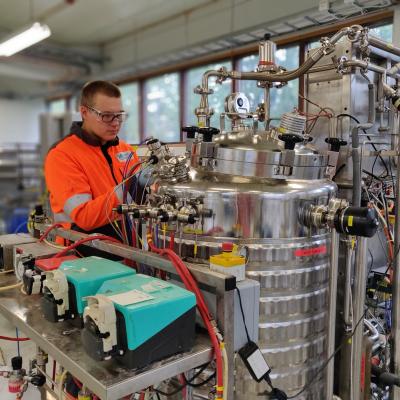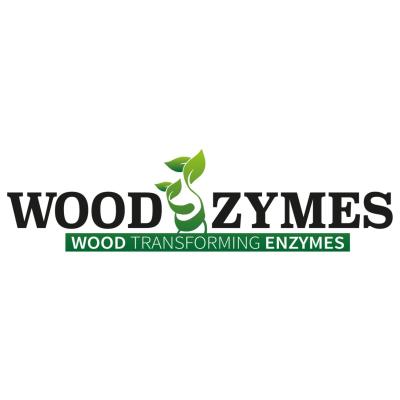Paper is made from cellulose extracted from wood after removing lignin and hemicellulose fractions. One of the main challenges faced by the paper pulp industry today is that not all wood components are fully exploited. In particular, kraft lignins account for about 85 % of the total lignin production in the world, but there is no established catalytic technology to achieve their depolymerisation into aromatic chemicals and building blocks. Given that both lignin and hemicellulose may serve as renewable sources of aromatic compounds and sugars for various bio-based processes, there is a need for enzymes able to modify these polymers under the extreme pH and temperature of the kraft pulping processes.
Identification and optimisation of extremophilic enzymes
The key objective of the WoodZymes project was to exploit wood biomass through tailor-made enzymes that could be incorporated into the wood processing industrial pipeline. WoodZymes received funding from the Circular Bio-based Europe Joint Undertaking, a public-private partnership between the EU and industry.
The project brought together 11 partners from four European countries who employed protein engineering and database mining to identify and further develop extremophilic enzymes with thermotolerant and alkaliphilic properties. These extremozymes included xylanases, which break down hemicellulose, and laccases, which act on lignin. The most promising candidate enzymes underwent pilot to industrial-scale production to be tested in several applications.
'One of the objectives of the WoodZymes project was to transform the underutilised lignin and hemicellulose fractions of the kraft pulp industry, to save on the amount of chemicals required and to reduce the overall environmental footprint,' explains project coordinator Susana Camarero. One highly extremophilic candidate was introduced into the eucalyptus kraft pulp bleaching sequence, notably saving on chlorine dioxide use and increasing pulp brightness. At the same time, the use of this enzyme reduced organochlorinated compounds in the effluents, lowering the environmental impact of this industry, and yielded higher quantities of hemicelluloses. The latter were exploited as papermaking additives to obtain paper with improved physico-mechanical properties while rendering significant energy savings during pulp refining.
One of the objectives is to reduce the environmental footprint of the pulp industry
WoodZymes project coordinator Susana Camarero
Furthermore, the enzymatic depolymerisation of lignin led to a wide range of phenolic building blocks that could be utilised as substituents for fossil-derived polyols in polyurethane insulation foams and of phenol in lignin-phenol formaldehyde resins for wood panel manufacture. Project researchers were able to obtain suitable formulations with a substantial decrease in the phenol and formaldehyde content, thus reducing the environmental impact of the fibreboard production process and the final product.
Advantages and prospects of extremophilic enzymes
The WoodZymes biocatalytic technologies efficiently valorise underutilised wood components such as kraft lignin and hemicelluloses. By overcoming technical bottlenecks, researchers have succeeded in closing the kraft process and incorporating subproducts of biomass conversion into the production process. This allows for the industrial exploitation of all components of the biomass feedstock in several applications. In this way, WoodZymes supports the connection between the pulp and paper industry, enzyme technology providers and fibreboard and insulation foam manufacturers and increases the competitiveness of the European industry.
'From an environmental point of view, the use of wood-transforming extremozymes constitutes a clean technology with significant energy and chemical savings,' emphasises Camarero. Moreover, the WoodZymes process leads to sustainable products and reduces the dependence on fossil resources with lower economic and environmental impact.

